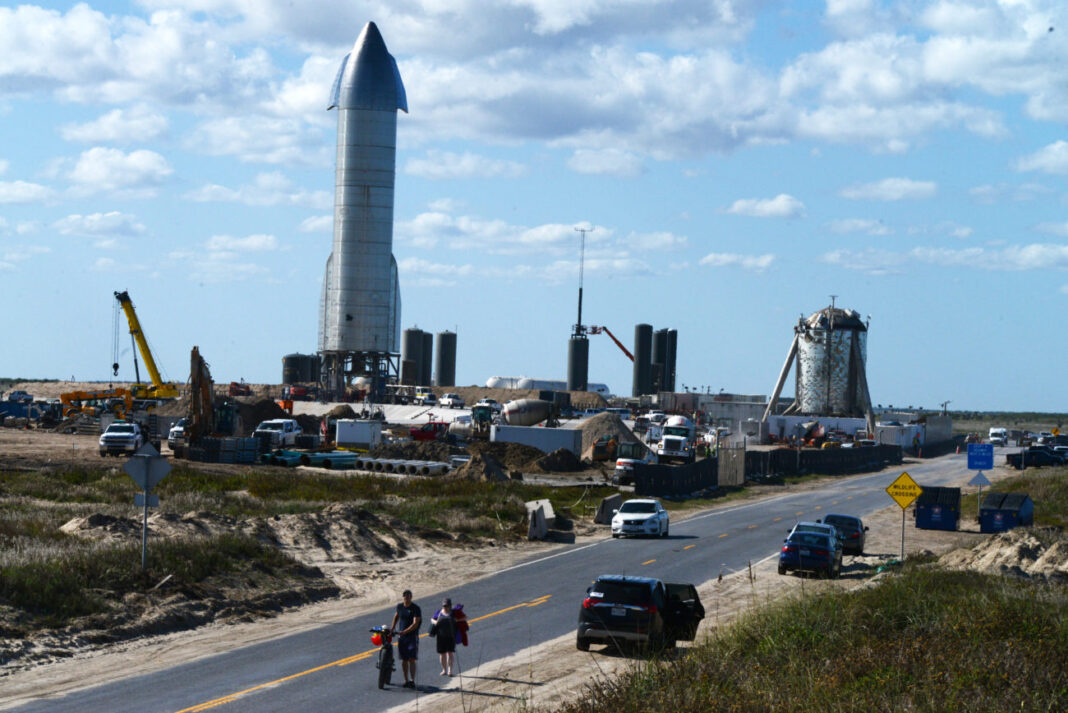BROWNSVILLE — The Federal Aviation Administration on Thursday released a Scoping Summary Report on SpaceX’s plan to launch a Starship/Super Heavy vehicle at its Boca Chica launch pad.
The federal agency received 321 comments and 122 of those were provided by various agencies and non-governmental organizations.
SpaceX is seeking experimental permits and or a vehicle operator license from the FAA to operate the Starship/Super Heavy vehicle.
The space company wants to launch Starship/Super Heavy for low Earth orbit, sun-synchronous orbit, geostationary transfer orbit, and interplanetary missions for cargo and humans. The space company also seeks to build an additional launch pad, two integration towers, and a desalination plant, the expansion of a solar farm, additional support buildings and a power plant.
According to the FAA, its evaluation of a permit or license application includes a review of public safety issues, national security or foreign policy concerns, insurance requirements for the launch operator and potential environmental impacts.
The FAA sought comments from the public on Nov. 23, 2020, to parties notifying them that they are in the beginning stages of conducting an environmental review of SpaceX’s Starship/Super Heavy proposal. The review is necessary because it falls outside of the scope of the companies 2014 Environmental Impact Statement and requires additional review, the Scoping Report states.
The FAA states the scoping process is necessary to determine the range of issues that will be addressed in an environmental review. “Scoping helps federal agencies determine the scope of issues for analysis, including identifying potential significant issues and eliminating non-significant issues from further studies,” the summary states.
Concerns raised by commenters about the proposed action include:
>> Potential impacts on protected species and habitat.
>> Potential cumulative effects of the proposed project and other development projects in the Rio Grande Valley.
>> Closure of public areas such as local roads and Boca Chica Beach.
>> Level of environmental review (i.e., the appropriateness of an EA versus an EIS).
>> Potential impacts on airspace .
>> Potential impacts on minority and low-income residents.
>> Potential impacts on land of cultural importance.
>> Safety of launch operations given the proximity to nearby liquefied natural gas facilities.
>> Degradation of the environment due to test and launch operations.
Positive impacts raised by commenters included:
>> Economic benefits to the regional economy.
>> Continued innovation and progress in commercial space transportation.
>> Benefits of reusable launch vehicles.
>> Job creation.
>> Ideal southerly location.
The FAA states all comments received during the scoping period are given equal consideration in the preparation of the Environmental Assessment draft.
The federal agency will supervise SpaceX’s preparation of the draft and additional cooperating and participating agencies will also participate in its development.
The EA allows the FAA to determine the appropriate course of action. These determinations may include:
>> Preparation of an Environmental Impact Statement because the proposed action’s environmental impacts would be significant.
>> Issuance of a Finding of No Significant Impact (FONSI).
>> Issuance of “Mitigated FONSI” providing for mitigation measures to address the proposed action’s environmental impact.
Once the EA draft is completed, the FAA will make it available to the public for review and comment.
A copy of the Scoping Summary Report can be found at: https://www.faa.gov/space/stakeholder_engagement/spacex_starship/





